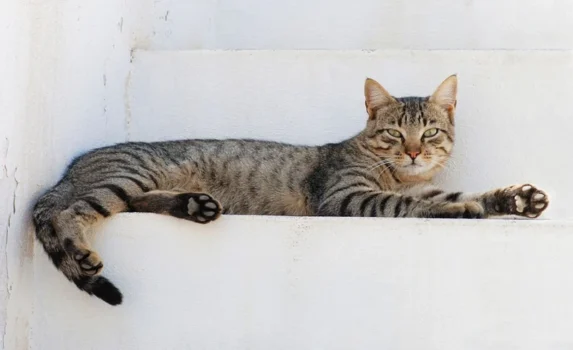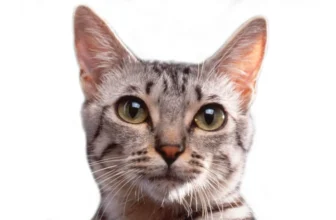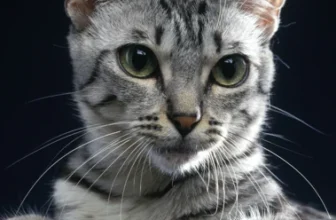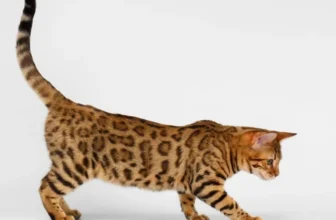The California Spangled Cat is a rare and unique breed known for their athleticism and exotic appearance. As with any feline species, understanding the signs of successful mating is crucial for producing healthy offspring. However, many cat owners may be perplexed about what to look for during the mating process. In this article, we will explore five signs of successful mating in California Spangled Cats. From physical and behavioral indicators to health and timing, we’ll examine what to keep an eye out for to ensure a successful breeding experience. So, let’s dive in and learn more about the fascinating world of California Spangled Cat mating!
Physical Signs
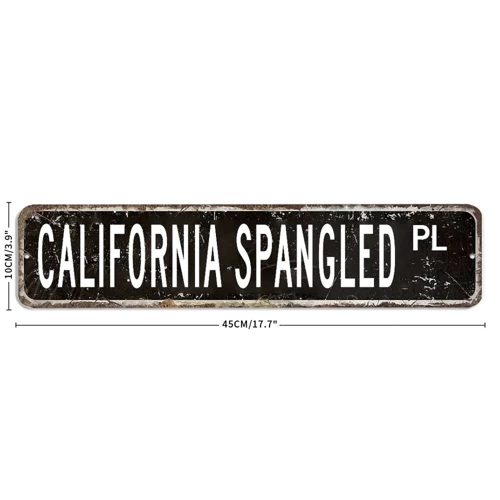
It can be fascinating to see how cats express their mating success, and California Spangled Cats are no exception. Understanding the physical signs of a successful mating in California Spangled Cats can be crucial for breeders, owners, and enthusiasts. From the male’s appearance to the female’s body language, certain cues can indicate a successful mating took place. Let’s explore some of these physical signs and what they mean for the breeding process. If you’re interested in learning more about California Spangled Cat breeding, check out our California Spangled Cat Mating Guide for a comprehensive overview of this topic.
Male
California Spangled male cats are sexually mature between the ages of 6 months and one year. However, the optimal breeding age for males is around 2 years. Once they reach this age, their physical characteristics change, and they become more muscular and angular. Male California Spangled cats have a broad head, strong jaws, and a thick neck, which makes them appear larger than they are. They typically weigh around 12-15 pounds and can grow up to 18 inches in length.
Here is a table with the physical characteristics of a male California Spangled cat:
| Physical Characteristic | Description |
|---|---|
| Fur Quality | Short and dense, even color distribution |
| Eye Color | Usually gold or hazel, but can be green or blue |
| Ear Shape | Tufted, small and round |
| Tail Shape | Long and slender, slightly curved at the end |
| Health Indicators | Frequent Vet Checkups, Optimal Breeding Age |
Male California Spangled cats tend to have a more muscular build than females. This can sometimes result in a more aggressive personality, particularly towards other males. They also have a stronger scent marking behavior, which can make them more territorial. To learn more about male territorial behavior, check out our article on Ca Spangled Cat Infertility.
It is important for breeders to understand the proper techniques for preparing California Spangled cats for breeding in order to ensure the best outcomes for both the male and the female. Additionally, breeders should understand the genetics of California Spangled cats in order to avoid breeding related cats. It is also important to understand the optimal breeding age for California Spangled cats, in order to ensure maximum fertility and healthy litters. In the next section, we will take a closer look at some behavioral indicators of a successful mating in California Spangled cats.
Female
Female California spangled cats display several physical signs when they are fertile and ready to mate. Some of the most common physical signs include body weight and size, vaginal discharge, and behavior changes.
Body Weight and Size: Female cats should be at a healthy weight and size to ensure a successful mating. A healthy female cat should weigh at least 8-10 pounds, depending on her body structure.
Vaginal Discharge: During estrus, the female cat may produce a clear or slightly bloody vaginal discharge. This is a natural response to hormonal changes in the female’s body and signals that she is ready to mate. It’s important to note that any excessive discharge or abnormal coloration may be a sign of infection or illness and requires immediate veterinary attention.
Behavior Changes: A female cat may become more affectionate or vocal during estrus. She may roll on the ground, display a rear-end presentation, or actively seek out a male mate. It’s important to provide a safe and stress-free environment for both cats during this time, as overcrowding or insufficient space may lead to aggression or territorial behavior.
It’s important to note that not all female cats will display these physical signs, and some may show only subtle changes during estrus. In such cases, it may be helpful to consult a veterinarian or cat breeding specialist to determine the best course of action.
If you are interested in learning more about the birthing process of California Spangled Cats, you can read our article on California Spangled Cat Birthing.
Behavioral Signs
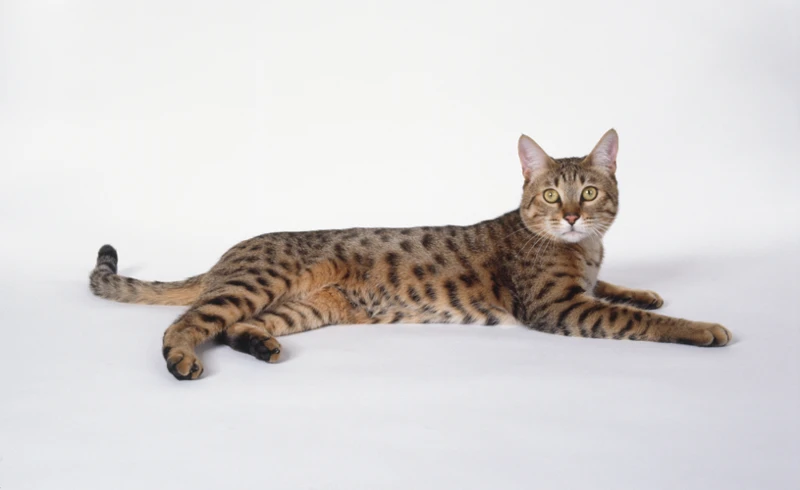
When it comes to mating in California Spangled Cats, physical signs are not the only indicators of success. In fact, paying attention to behavioral signs can provide valuable insight into the mating process. From mating behaviors to nesting behaviors, and even male territorial behavior, observing these actions can help determine whether mating has been successful. So, let’s dive deeper into the behavioral signs of successful mating and what they might tell us about our furry feline friends.
Mating Behavior
While California Spangled cats have been known to mate successfully, certain behaviors can indicate whether or not the mating has been fruitful. Here are five key behaviors to look out for:
- Increased Affection: When cats are in heat, they may become more affectionate with their potential mate. This can manifest through increased purring, rubbing their head against their partner, and even licking them. It is essential to look for these signs to understand if the cats are mates or just friendly.
- The Flehmen Response: When a male cat sniffs a female cat, he may respond with the flehmen response. This is a behavior in which the cat curls back their lip, opening their mouth slightly and breathing deeply. It helps them detect pheromones emitted by the female cat that signals that she is in heat.
- Chirping and Vocalizing: When a male California Spangled cat sees a potential mate, it may start chirping or making other sounds to signal its interest. Female cats in heat often meow more than usual as well. Hearing such vocalizations from cats is a telltale sign of successful mating.
- Aggressive Mating Behavior: If the male cat is too aggressive, it can lead to complications, such as injury to both cats. However, some amount of aggression may be present in healthy conditions. The male cat may hold down the female cat’s neck or bite the back of her neck while mating. It is essential to monitor the behavior, but such behavior can be conducive to mating.
- Post-Mating Behavior: Successful mating can be confirmed by the behavior of cats after mating. If the female cat becomes more relaxed, less agitated, and less vocal, then it’s a sign of successful mating. The female should also exhibit nesting behavior as described in the behavioral signs earlier in the article.
These are some of the critical behavioral signs that indicate a successful mating in California Spangled cats. However, it is important to remember that different cats exhibit different behaviors during mating, and no one behavior can guarantee a successful mating. It is crucial to be patient and observe the cats for some time before concluding anything regarding the mating.
Nesting Behavior
During mating season, female California Spangled Cats exhibit a specific nesting behavior that indicates a successful mating. The nesting behavior involves a set of actions that the female cat performs, which could signal that she is pregnant and preparing for the arrival of her litter. Here are some signs that your female California Spangled Cat is showing nesting behavior:
- Increased Sleep Time: If the female cat spends more time sleeping than usual, it might be a sign that she is conserving energy for the litter. Pregnant cats often sleep more and stay in one place for extended periods.
- Nest Building: If the cat starts to gather materials such as blankets, towels, and soft objects around a prefered spot, it could mean that she’s building a nest. In some cases, the cat may start carrying items from one place to another in preparation for her litter.
- Seeking Privacy: A female cat that is pregnant and preparing for her litter may start seeking privacy. She may choose to hide herself in a secluded area or a quiet corner of a room where she feels comfortable.
- Agitated Behavior: Some pregnant cats may start exhibiting agitated behavior, especially if they feel threatened or disturbed. This behavior may include hissing, growling, or clawing.
- Inappetence: Although rare, some pregnant cats may exhibit a decrease in appetite during gestation. The female cat may show little interest in food or have a loss of appetite. However, this does not always happen, and some pregnant cats continue to eat normally.
If you notice these nesting behaviors in your female California Spangled Cat, it’s essential to provide her with a suitable nesting box. The nesting box should be easy to access, lined with comfortable bedding, and located in a secluded area away from other pets. This space will give the female cat privacy and a safe place to give birth when the time comes. The nesting period is a critical time for your cat, and it’s essential to monitor her behavior closely and provide any necessary support.
Male Territorial Behavior
Male California Spangled cats can exhibit territorial behavior when it comes to mating. This behavior can help determine whether or not a mating will be successful. Some signs of male territorial behavior include marking with urine, scratching of furniture and walls, and showing aggressive behavior towards other males.
One of the most notable signs of territorial behavior is urine marking. This involves the male cat urinating on objects around the house to mark his territory. The urine contains pheromones that can attract females and signal to other males that this territory is taken. This behavior can be problematic for owners as it can lead to a strong, unpleasant odor and staining of objects around the house.
Another sign of territorial behavior is scratching of furniture and walls. Male cats may scratch as a way to mark their territory and leave visible and scent marks. This can damage furniture and create unsightly scratches on walls.
Lastly, male cats may show aggression towards other male cats in the household. This behavior is particularly common around the time of mating, as male cats may fight over a female in heat. These fights can be dangerous and may result in injuries to both cats.
To summarize, the following table highlights the male territorial behavior signs:
| Signs of Male Territorial Behavior |
|---|
| Urine marking on objects |
| Scratching of furniture and walls |
| Show of aggression towards other males |
It is important to note that not all male cats exhibit territorial behaviors, and that some behavior may be reduced with training and positive reinforcement. Proper socialization at a young age and providing adequate resources for each cat can also help reduce territorial behavior.
Health Indicators
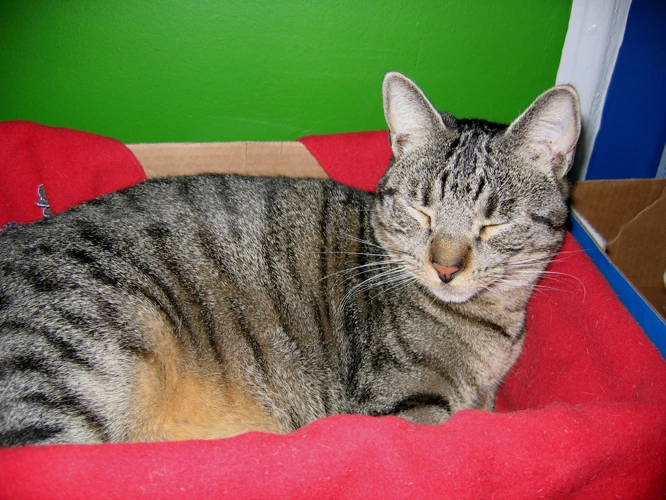
Ensuring the health and wellbeing of your California Spangled cat is crucial to achieving successful mating. Healthy and happy cats are more likely to reproduce without any complications, leading to a higher chance of producing quality offspring. As a responsible cat owner, it’s essential to pay attention to certain health indicators to guarantee that your furry friends are in excellent condition. From regular vet checkups to proper nutrition, this section will guide you through the necessary steps to maintain your cat’s optimum health for successful breeding.
Frequent Vet Checkups
Regular vet checkups are crucial in ensuring the overall health and well-being of your California Spangled Cat during mating. These checkups can help catch any potential health issues early, preventing them from escalating into serious problems. A visit to the vet can also offer an opportunity to discuss any concerns or questions you have
During a veterinary checkup, your cat’s weight, temperature, and heart rate will be checked. The checked-up results will be noted down in vet records to keep track of any changes over time. Urine and blood samples may also be taken to check for any underlying health conditions such as infections or diseases.
Below is a table with a recommended frequency of vet checkups for California Spangled Cats:
| Age | Frequency of Vet Checkups |
|---|---|
| Kitten – 2 to 6 months old | Every 3 to 4 weeks |
| 6 months – 1 year old | Every 2 to 3 months |
| 1 – 6 years old | Yearly checkups |
| 6 years old or older | Every 6 months |
It’s essential to keep up with regular checkups to maintain your cat’s good health, especially during the mating process. Some cat owners may consider skipping checkups if their cat appears to be healthy, but it’s crucial to remember that many conditions may not exhibit obvious symptoms until they have progressed significantly.
Ultimately, frequent vet checkups provide peace of mind and can help keep your California Spangled Cat healthy and happy during mating and beyond.
Healthy Litter Size
When it comes to successful mating in California spangled cats, one of the indicators of health and well-being is the size of the litter they produce. A healthy litter size is typically between three to five kittens. This is a sign that the mother cat, or queen, is in good physical condition and has received proper nutrition throughout her pregnancy.
Factors Affecting Litter Size:
- Age of the Queen: The age of the queen plays a crucial role in determining litter size. Younger cats tend to have smaller litters whereas mature cats can give birth to larger litters.
- Nutrition: A well-nourished cat is more likely to have a healthy litter of kittens. Nutritional deficiencies can lead to smaller litter size or may even result in a failure to conceive.
- Genetics: Some cat breeds are known to produce larger litters than others. California Spangled cats, for example, typically have smaller litters than other breeds.
- Mating: The number of successful matings can also impact litter size. If mating occurs multiple times, it can result in larger litters.
It’s important to note that the quality of the litter is just as important as its size. A litter with healthy, robust kittens is a sign that the queen received proper care during gestation and the kittens received proper care during their first weeks of life. To ensure a healthy litter of kittens, it’s important to provide the queen with a balanced diet and regular veterinary checkups throughout her pregnancy. Additionally, kittens should receive proper nutrition and veterinary care during their first few weeks of life to ensure they grow into healthy adults.
Proper Nutrition
Proper nutrition is key to a successful mating in California Spangled cats. A well-balanced diet before, during, and after mating is crucial for the health of both female and male cats involved. Here are some important dietary considerations for a successful mating:
- High-Protein Diet: Protein is essential for building strong and healthy muscles, which is especially important for male cats who need the strength for mating. A diet that is high in protein can also help females maintain their weight and stay healthy during the mating process. Good sources of protein include chicken, turkey, fish, and beef.
- Plenty of Water: Adequate hydration is important during the mating process, as well as for the overall health of the cats. Make sure there is always fresh, clean water available for your cats.
- Vitamins and Minerals: Ensure that your cats are getting all of the necessary vitamins and minerals they need to stay healthy before, during, and after mating. A nutrient-rich diet can help prepare the female’s body for pregnancy and promote healthy fetal development. Consult with your veterinarian about specific vitamin and mineral supplementation for your cats.
- Avoid Free-Feeding: Free-feeding or leaving a bowl of food out all-day long can lead to overeating and obesity in cats. Overweight cats may have a harder time with mating and pregnancy, and obesity can lead to a host of other health problems. Be sure to follow a feeding schedule and monitor the portions and the overall calorie intake of your cats.
- Special Dietary Needs: Female cats may require certain supplements or types of food during pregnancy, such as high-calcium food. Consult with your veterinarian about any special dietary needs for your cats during the pregnancy.
By providing proper nutrition, cat owners can help their California Spangled cats have a successful and healthy mating experience.
Mating Timeline
As a California Spangled cat owner or breeder, understanding the mating timeline is crucial for successful breeding. From the timing of mating to post-mating care, every step plays a vital role in ensuring the health of the mother and her litter. In this section, we’ll highlight the key aspects of the mating timeline that you need to know, including the gestation period, timing of mating, and post-mating care. So buckle up and let’s dive in!
Timing of Mating
The timing of mating in California Spangled Cats is crucial to ensure a successful litter. Female cats are typically in heat for around 3-7 days, during which time they will display physical and behavioral signs of being ready to mate. However, it’s important to note that cats can vary in their cycle length and timing, so keeping a close eye on your female cat’s behavior is key.
Factors to consider when timing mating:
- Age: California Spangled Cats should not be bred until they reach at least 1 year of age. This ensures that they are mature enough to handle pregnancy and childbirth.
- Heat Cycle: Female cats should be mated during their heat cycle, which usually occurs every 3 weeks during breeding season. It’s important to note that some cats may be in heat for longer or shorter periods.
- Mating Frequency: While some breeders may choose to allow their cats to mate multiple times during the female’s heat cycle, it’s important to limit the frequency of mating to avoid over-stressing the female and decreasing the chances of a successful pregnancy.
- Male and Female Compatibility: It’s important to ensure that the male and female cats are compatible before mating. Aggressive behavior or a lack of interest from either cat can make the mating process unsuccessful.
By considering these factors and closely monitoring the female cat’s heat cycle, breeders can maximize the chances of a successful mating and healthy litter of California Spangled Cats.
Gestation Period
The gestation period in California Spangled Cats is an important indicator of successful mating. It refers to the time between fertilization and the birth of kittens. Typically, the gestation period of a California Spangled Cat is around 62-65 days. During this time, the female undergoes a lot of physical and hormonal changes. It is important for the owner to keep a close eye on their cat during this period and take the necessary precautions to ensure that the gestation is successful.
Signs of Pregnancy
One of the most obvious signs of pregnancy in California Spangled Cats is a noticeable enlargement of the abdomen. The cat may begin to gain weight and appear rounder than usual. Additionally, their nipples may become more prominent and change color. The cat may also become more affectionate and seek more attention from their owner.
Care during Gestation
California Spangled Cats require extra care and attention during gestation. The owner should ensure that their cat receives a balanced diet that is appropriate for a pregnant cat. The cat should also be taken for regular vet checkups to monitor the pregnancy, as well as receive any necessary vaccinations and medication. The owner should also ensure that their cat gets sufficient rest and exercise, but does not undertake any strenuous activities.
Preparation for Birth
As the gestation period nears its end, the owner should prepare for the birth of the kittens. They should create a comfortable and private area for the cat to deliver the kittens, such as a box with soft bedding. The owner should also prepare necessary supplies such as kitten formula, a heating pad, and clean towels. The owner should keep a close eye on the cat during this period and be prepared to assist in the birthing process if necessary.
The gestation period is an important indicator of successful mating in California Spangled Cats. It requires extra attention, care, and preparation from the owner. By providing their cat with the necessary care and support, the owner can ensure a successful gestation period and the birth of healthy kittens.
Post-Mating Care
After successful mating, it’s essential to provide appropriate care to ensure the health and well-being of the mother and her litter. Here are some post-mating care tips to consider:
- Provide Adequate Nutrition: While the mother is nursing, make sure she has access to high-quality food and plenty of water. Consult with a veterinarian to determine the appropriate diet for the mother during lactation.
- Regular Check-Ups: Regular check-ups with a veterinarian help to ensure that the mother and her litter are healthy. Vaccinations, deworming, and other necessary treatments should also be performed under the guidance of a veterinary professional.
- Maintain Cleanliness: It’s crucial to maintain cleanliness in the surrounding environment of the mother and her litter. This helps to minimize the risk of infections spreading and keeps the mother and her offspring healthy.
- Provide Comfortable and Safe Space: The mother and her litter need a quiet and comfortable space. Provide a cozy and warm area for the mother and her offspring to rest and nurse.
- Observe Behavior Changes: Observe the behavior of the mother and her litter, and report any changes to a veterinarian. Any significant changes in behavior, appetite or general health should be reported immediately.
Following these post-mating care tips will help ensure that the mother recovers quickly and that the litter is healthy. It’s essential to consult with a veterinarian for guidance on the best practices for post-mating care, as every cat is unique and may require individualized attention.
Conclusion
In conclusion, when it comes to successful mating in California Spangled Cats, there are a variety of physical and behavioral signs to look out for as well as health indicators that can determine the success of the mating process. Proper nutrition, frequent vet checkups, and a healthy litter size are all indicative of a successful mating.
Furthermore, understanding the mating timeline, from the timing of mating to the gestation period and post-mating care, is crucial to ensuring successful breeding. It’s important to note that not all matings will result in a successful pregnancy and that it’s advisable to consult with a veterinarian for professional guidance on breeding practices.
In summary, careful observation and attention to your California Spangled Cat’s physical and behavioral cues, coupled with appropriate health care and timing of the mating process, can greatly improve the likelihood of a successful mating and healthy litter. By taking necessary precautions and following recommended guidelines, you can help ensure the continuation of this unique and beloved breed of cats.
Frequently Asked Questions
1. What is the average age for California Spangled Cats to mate?
California Spangled Cats can start mating at around 8-12 months of age. However, it is recommended to wait until they are at least a year old and have reached their adult size to avoid complications during pregnancy.
2. How can you tell if a male California Spangled Cat is ready to mate?
Male California Spangled Cats become sexually active at around 8-10 months of age and will display behavioral and physical changes. They become more vocal, may spray urine to mark their territory, and become more affectionate towards females during the mating season.
3. What is the gestation period for California Spangled Cats?
The gestation period for California Spangled Cats is approximately 63-65 days.
4. How many kittens can a California Spangled Cat have in one litter?
A California Spangled Cat can have a litter of 4 to 6 kittens on average.
5. How can you tell if a female California Spangled Cat is in heat?
Female California Spangled Cats will show signs of restlessness and become more affectionate towards male cats during the mating season. They may also vocalize more and display physical behaviors such as rolling on the ground.
6. What should you feed a pregnant California Spangled Cat?
A pregnant California Spangled Cat should be fed a high-quality diet that is rich in protein and essential vitamins and minerals. Consult with your veterinarian to ensure your cat is getting the proper nutrients for a healthy pregnancy.
7. How long should you wait before breeding a female California Spangled Cat again after she gives birth?
It is recommended to wait at least a year before breeding a female California Spangled Cat again to allow her body to fully recover and ensure a healthy pregnancy the next time around.
8. What is the mating ritual for California Spangled Cats?
During the mating ritual, the male will typically approach the female and try to gain her attention through vocalizations and physical touch. If she is receptive, she will display physical signs of readiness such as raising her rear end.
9. How do you provide proper post-mating care for a pregnant California Spangled Cat?
Provide a comfortable and stress-free environment for your pregnant California Spangled Cat. Offer plenty of high-quality food and fresh water, and schedule regular check-ups with your veterinarian to monitor her health and the health of the developing kittens.
10. What are some common health issues that can affect California Spangled Cat mating and pregnancy?
Some common health issues that can affect California Spangled Cat mating and pregnancy include infections, stress, and complications during delivery. Consult with your veterinarian to ensure proper care and treatment for your cat.

